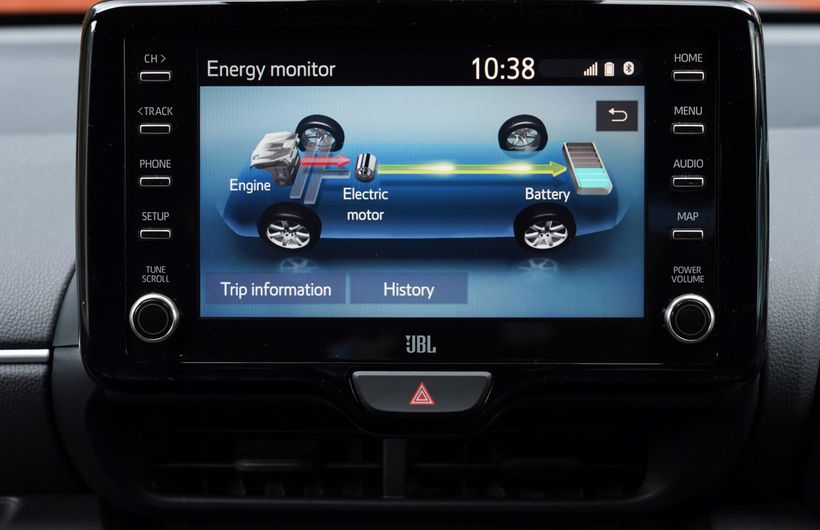We all like the idea of innovations which do things by themselves, like a self-cleaning oven, or a self-basting turkey. So, on the face of it, a self-charging hybrid sounds like an excellent idea. You don’t have to worry about finding a charger or plugging in cables!
The reality is not quite so impressive though, as there aren’t any miracles involved. You’ll avoid plugging in, but you’ll have to fill up with fuel instead. The good news is that any hybrid will generally be more efficient than a conventional petrol or diesel car, but it won’t ever be as cheap to run as a car which uses energy from the grid for some or all its power.
How does it work?
The term ‘self-charging hybrid’ was invented by marketing people to describe a HEV, or hybrid electric vehicle. These have a very small battery, an electric motor, and a larger petrol (or occasionally diesel) engine.
The battery is charged automatically using electricity created and captured when the car slows down. This happens as the electric motor switches to becomes a generator, harnessing energy which is usually wasted. It’s sort of like recycling.
This power is then used to feed the electric motor when you press on the accelerator again. As the petrol engine doesn’t have to work as hard because it’s getting a helping hand, it improves fuel economy and lowers emissions. It also makes the car feel faster.
The driver doesn’t have to do anything to initiate this process – the car just works it out itself. You can usually choose a few different modes however to make the car behave differently and be sportier or more economical.
Just to complicate things further, there’s a new type of hybrid which works in a different way. Instead of having an electric motor helping the engine occasionally, the new versions have a petrol engine which works solely as a generator to provide electricity to the battery. This is then fed to the motors which propel the car along, so there is no physical connection between the petrol engine and the wheels.
This can make the car even more economical as the petrol engine can be set to run at its most efficient levels, while the battery takes some of the strain and smooths out the peaks and troughs in demand for acceleration and braking. This system is currently used by Honda in the Jazz and Nissan in the new Qashqai, but others will follow
 A screen will usually tell you where the power is flowing around your hybrid system
A screen will usually tell you where the power is flowing around your hybrid system 













